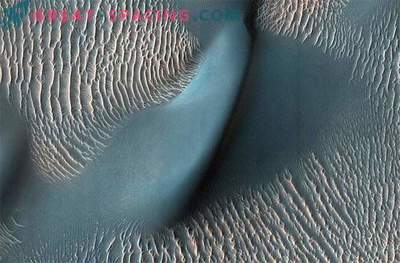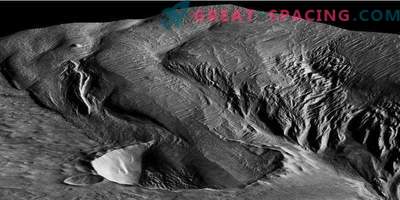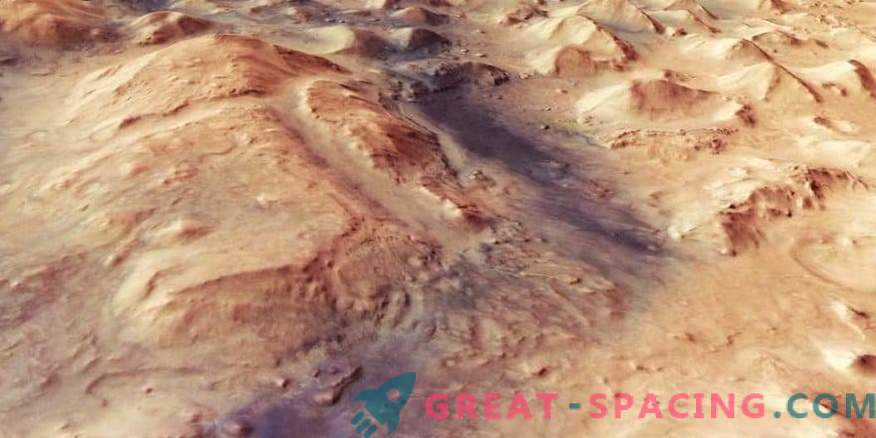
A perspective view of Mars shows Nili Fossae - a steep slope located between the northern lowlands (lower right) and the southern elevation (upper left) of the Red Planet. This oblique perspective is generated using data from the ESA HRSC high resolution camera. The territory is part of the region mapped by Mars Express on February 26, 2018
The ESA Mars-Express spacecraft displayed an interesting part of the Martian surface. It is a rocky, fragmented slope located on the border of the northern and southern hemispheres. The region is an impressive example of past activity on the planet and shows signs of where the flow of wind, water and ice once transported material from place to place, cutting out remarkable patterns and embossed shapes.
Mars can be perceived as a divided planet. The northern hemisphere is located several kilometers below the south. This clear topographic split is called the Martian dichotomy. North Mars also exhibits huge areas of smooth surface, while the southern regions are dotted with craters. It is believed that the cause was past volcanic activity.
The picture shows the territory of Nili Fossae, located on the border of the split between north and south. The area is filled with rocky valleys, small hills and flat relief forms. Some parts are as if pressed, which is why hints on channels are created.
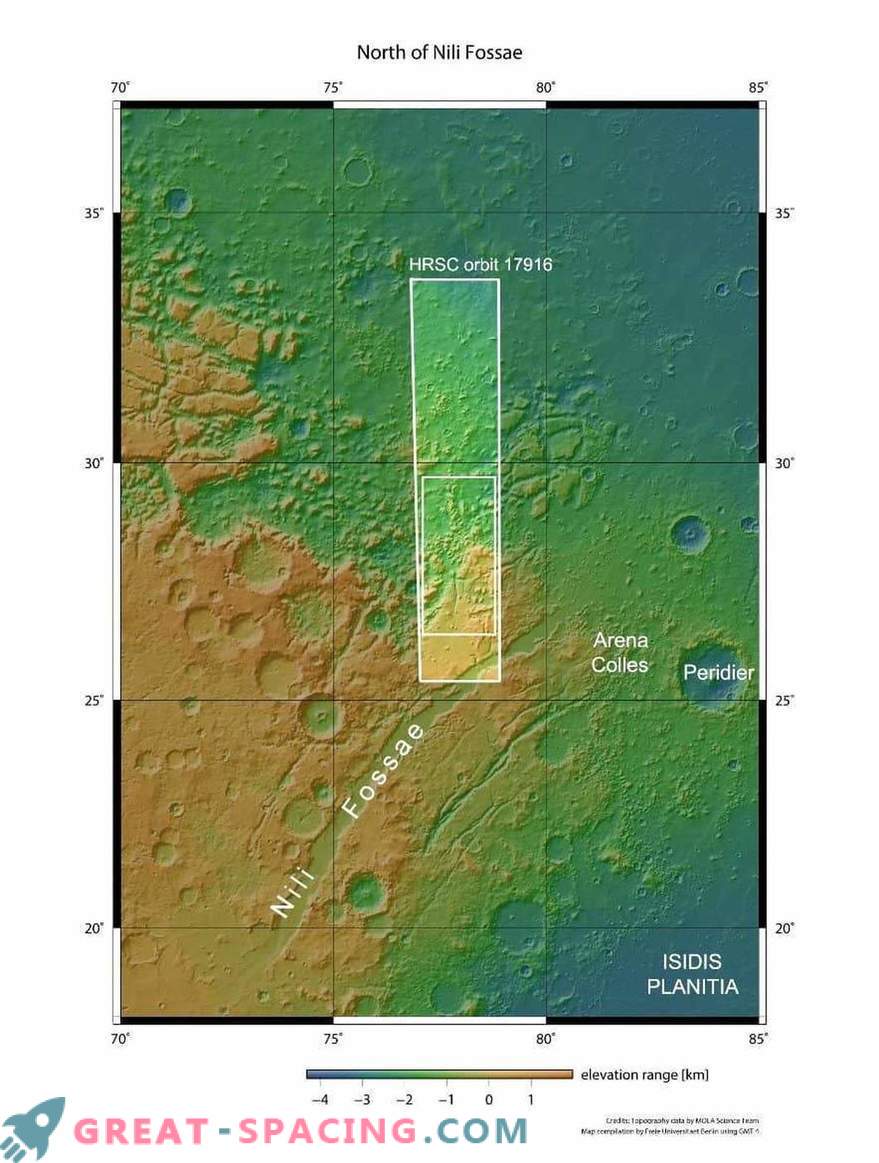
Nili Fossae - the area between the northern lowlands and the southern highlands of Mars. All photos show the area displayed on the ESA Mars Express orbit, and the highlighted frame shows a specific area
Mars is now perceived as a dry desert. But scientists believe that the shape of the territory of Nili Fossae is formed with the participation of water due to prolonged erosion. It was also possible to find other signs of contact with water in the past. The OMEGA Mars Express Spectrometer records spotty clay minerals that indicate the former presence of water.
The height of Nili Fossae and its environs is somewhat diverse: the areas on the left and bottom left (south) are higher than the northern ones, which reflects the dichotomy. The landscape consists of rocky plateaus, and the lower terrain includes smaller rocks with hills. The sites are separated by erosion channels and valleys.
The split is considered the result of moving material on Mars hundreds of millions of years ago. Like on Earth, streams of water and ice cut through the Martian surface and slowly molded the now recognizable forms. It is believed that Nili Fossae was transferred from higher areas to lower ones, where pieces of resistant rocks remained intact and formed today's reliefs.
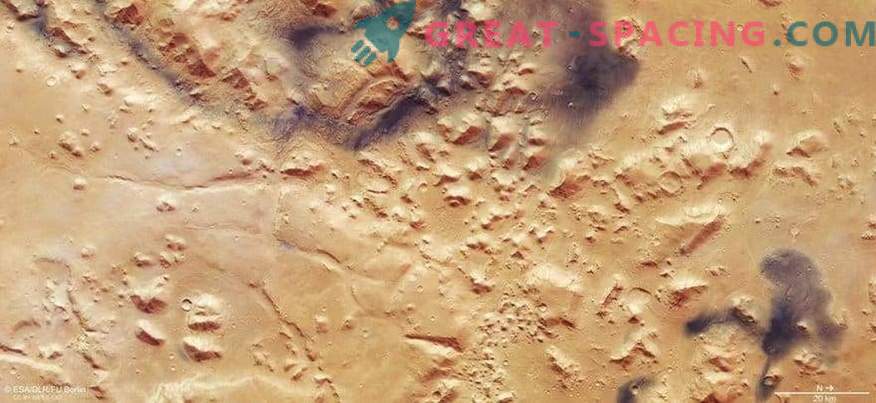
The color image shows the landscape around Nili Fossae - a rebound located between the northern lowlands and the southern highlands. Created with the help of the HRSC orbiter camera ESA Mars Express. Surface resolution - 18 m / pixel. The field is perpendicular to the surface of Mars. It is believed that the forms and structures scattered throughout the frame, over time, are formed by not only the flow of water and ice, but also the wind. Examples are visible here as surface spots. They seem particularly dark on the background of ocher. These are patches of darker volcanic sand, transported and deposited by modern Martian winds. Wind often moves sand and dust on the surface of the Red Planet, forming ripples of dune fields throughout the planet.
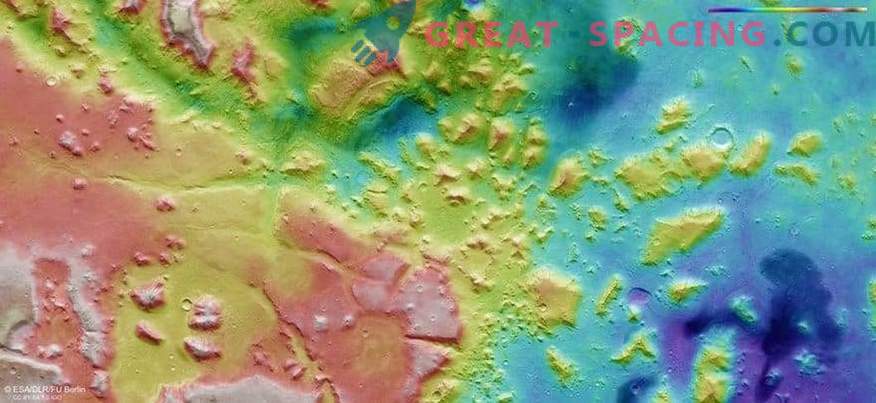
The photo shows the relative heights of the landscape of Nili Fossae and around it. The lower parts of the surface appear purple and blue, and the high parts are white, brown and red. The topographic view with color coding is based on a digital model of the region’s terrain, from which the landscape topography can be obtained. It contains data from the high-resolution HRSC Mars Express ESA camera.





